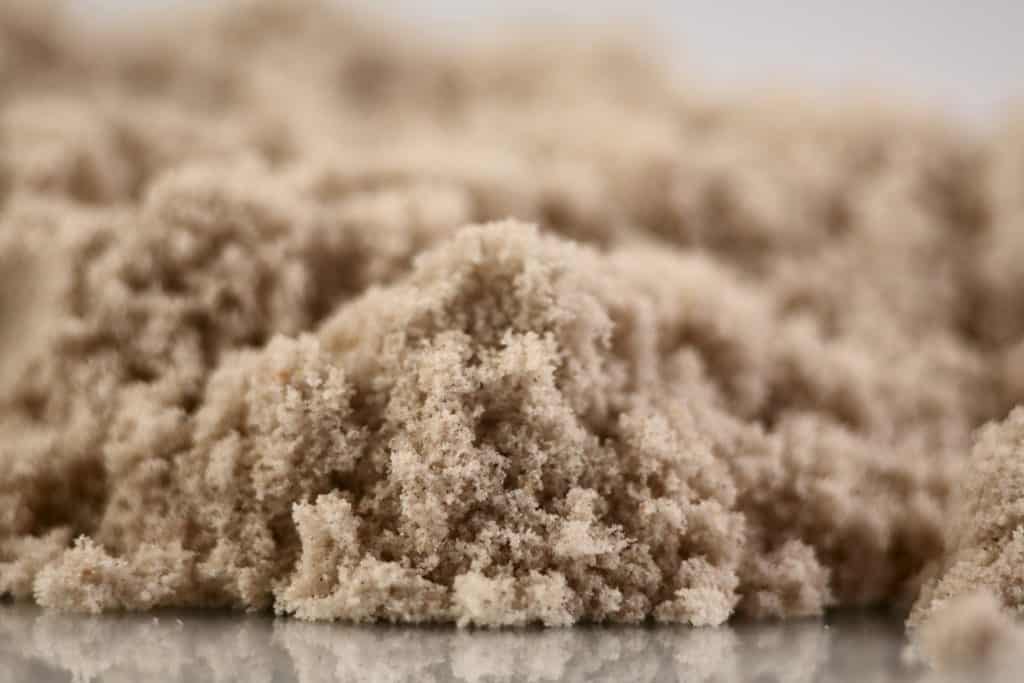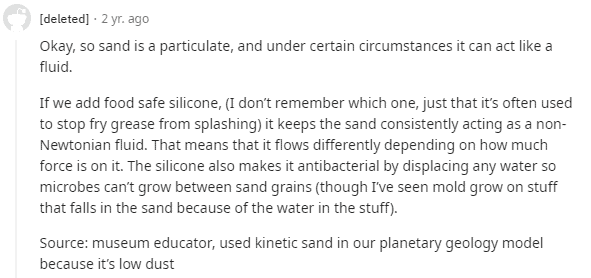Kinetic sand is a fun children’s toy that can keep your little one entertained for hours on end. Many sellers recommend that you swap your batch of sand out every couple of years, but when do you know to do that?
How can you tell when your kinetic sand is about to go bad – what are the signs to watch for?
Kinetic sand doesn’t spoil, but its components can degrade over time. The silicon oils could dry out or your sand might trap too much dirt or dust between granules. Both of these can affect your kinetic sand’s performance, making it less responsive to play with.
The colored dye in the sand could also run, potentially causing some inconvenient stains. Lastly, your kinetic sand might even develop mold, which is a serious health risk!
Kinetic sand doesn’t go bad in the traditional sense, but it won’t keep indefinitely. If any of the following issues come up it’d be wise to replace your child’s kinetic sand with a fresher batch.
Does Kinetic Sand Go Bad?
Kinetic Sand Doesn’t Technically “Go Bad”
Kinetic sand isn’t the type of kid’s toy that breaks – it just loses potency over time, becoming less responsive to touch. It’ll generally stay safe to handle, but it stops being fun to play with.
Imagine a LEGO set with half the bricks glued together – nothing’s broken about it, but it may as well not be a toy anymore. It becomes less functional, but never dangerous on its own.
With proper maintenance and storage precautions, your kinetic sand batch should be expected to last for about two years before it needs to be changed. You might even be able to keep using it for four or even five years, provided your kids don’t play with it too often!
Kinetic sand won’t ever break, but time and use might cause your kid’s batch to develop problems. Below are a few common issues that might be your sign to finally replace your kid’s kinetic sand.
The Oil can Dry Out (And Lose Texture and Firmness)

Kinetic sand is made of three simple components: fine sand, dimethicone polymer, and silicon oil. Both the sand and polymer components can last for quite a while without serious degrading, but the silicon oils might dry out in as little as a year – depending on your storage method.
Kinetic sand needs that lubrication to function. Otherwise, its texture and firmness will take a hit. Their sand won’t be able to hold its shape as well as it could, which might frustrate your little one.
This can be mitigated by adding a few drops of kitchen oil to your sand batch, but that’s a stopgap solution at best. Even then, we wouldn’t recommend doing it more than a few times because…
Kinetic Sand Naturally Traps Dirt and Other Particles
It’s a common notion that kinetic sand is a sanitary and self-cleaning toy. That is true to an extent, but while kinetic sand doesn’t attract dirt and dust it will start trapping them after constant use.
Think about it: your child’s hands alone will likely introduce sweat, skin flakes, dust, and probably whatever they ate last into their sand toy! Kinetic sand is often advertised as anti-microbial, which isn’t a guarantee for all brands available.
Even assuming that were the case, anti-microbial only means it slows down or inactivates microorganisms – it won’t do anything with the detritus or waste residue left behind in the sand.
The Colored Dye Can Cause Random Staining

Kinetic sand is, for the most part, genuinely clean and easy enough to maintain. Unfortunately, many sellers add colored dye to the product in order to better appeal to their target market.
Some sellers even add glitter to the mix – with naturally messy results to follow!
The other general components are expected to remain relatively similar, but the quality of colored dye used can vary wildly between competing brands. Eventually, those dyes will start breaking down, which could seep into less-than-ideal places, like cracks in the floor or carpet.
Trying to get these stubborn stains out can be an exercise in frustration. The worst part is that it’s pretty much impossible to tell when or even if that’ll be a concern.
It might not be something you’ll ever personally encounter, or you might have to start scrubbing angry orange stains from their shirt in six months! You won’t know until it happens!
The Smell Will Turn Moldy and Unpleasant Over Time

Kinetic sand should be low-maintenance, but a lot can happen over time. Your child will be playing with that sandbox for a while, which could potentially introduce water, sweat, milk, or even saliva into the batch of sand. This dampness will accumulate, which is problematic.
Eventually, mold might develop. Technically, it doesn’t develop in the sand, but rather pockets of moisture inside – another reason to keep their kinetic sand dry.
Exposure could lead to irritated eyes and ears, reddened skin, or even respiratory difficulties if your child is asthmatic or allergic.
Your kinetic sand’s antimicrobial properties have limits. If it starts to smell persistently of mold, it’s safe to assume that the unwanted specimens are being inhibited at best, not eradicated.
Fortunately, this can be dealt with. Spray your kinetic sand batch down with either a mild detergent solution or rubbing alcohol. Let this sit for at least an hour, rinse thoroughly with warm or hot water (depending on how persistent the mold may be), then leave it to dry overnight.
When it comes to mold, you shouldn’t ever take half-measures. If you aren’t sure the mold is gone, run it through the treatment above again.
If the smell continues to persist – or you’re starting to run out of sand to treat! – we’d strongly urge you to just buy your kid a new batch of kinetic sand.
Final Thoughts
Kinetic sand is a fun, non-perishable toy that’ll do a great job of keeping your kids entertained. While it can’t spoil or go bad, it will likely begin developing issues at the end of its shelf life.
While those problems can be mitigated to an extent, those measures won’t ever be a genuine solution. Other risks, like running dye, are a ticking time bomb! It might be simpler, safer, and cheaper in the long run if you just opt to replace your kid’s kinetic sand kit every few years.